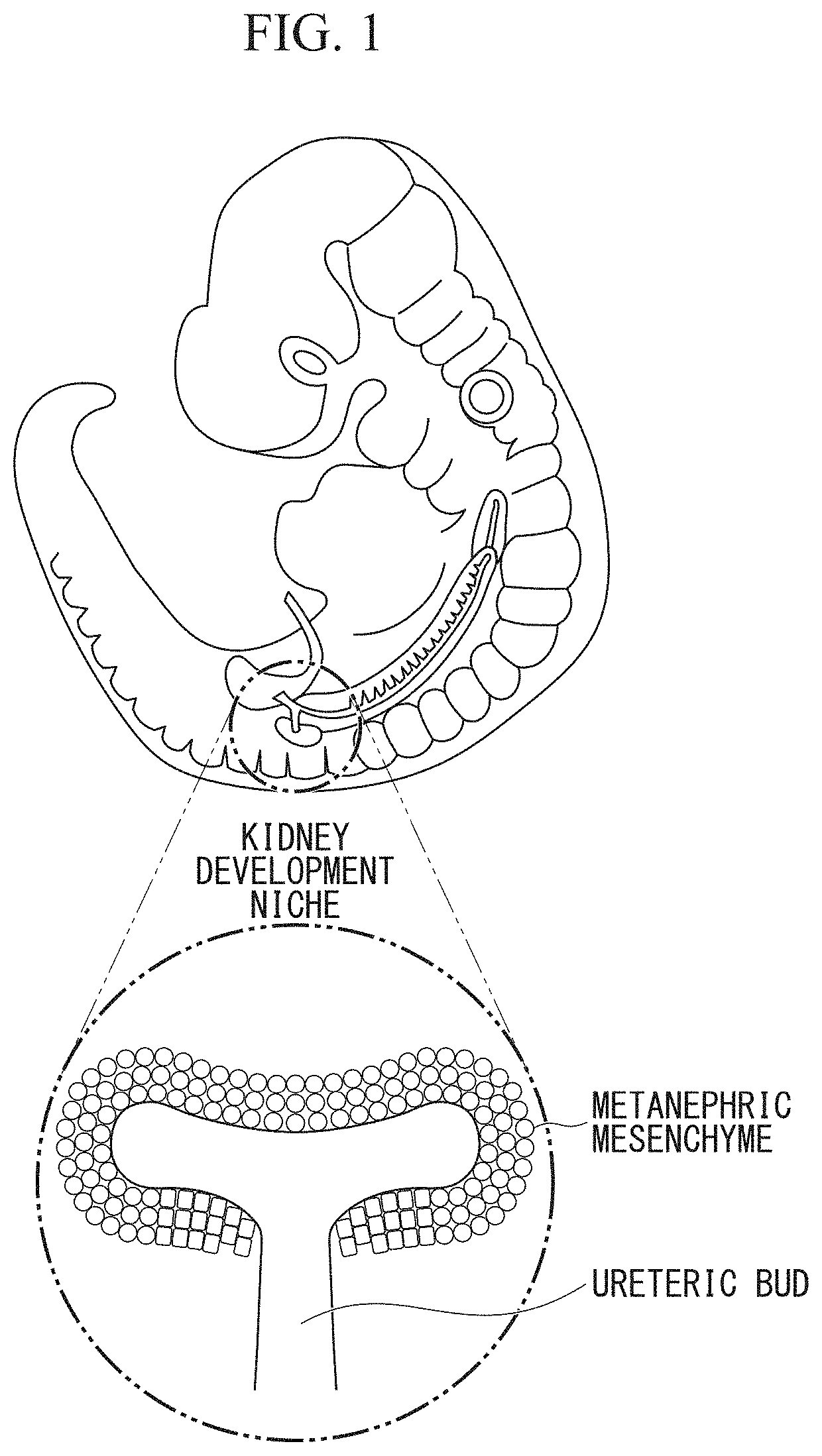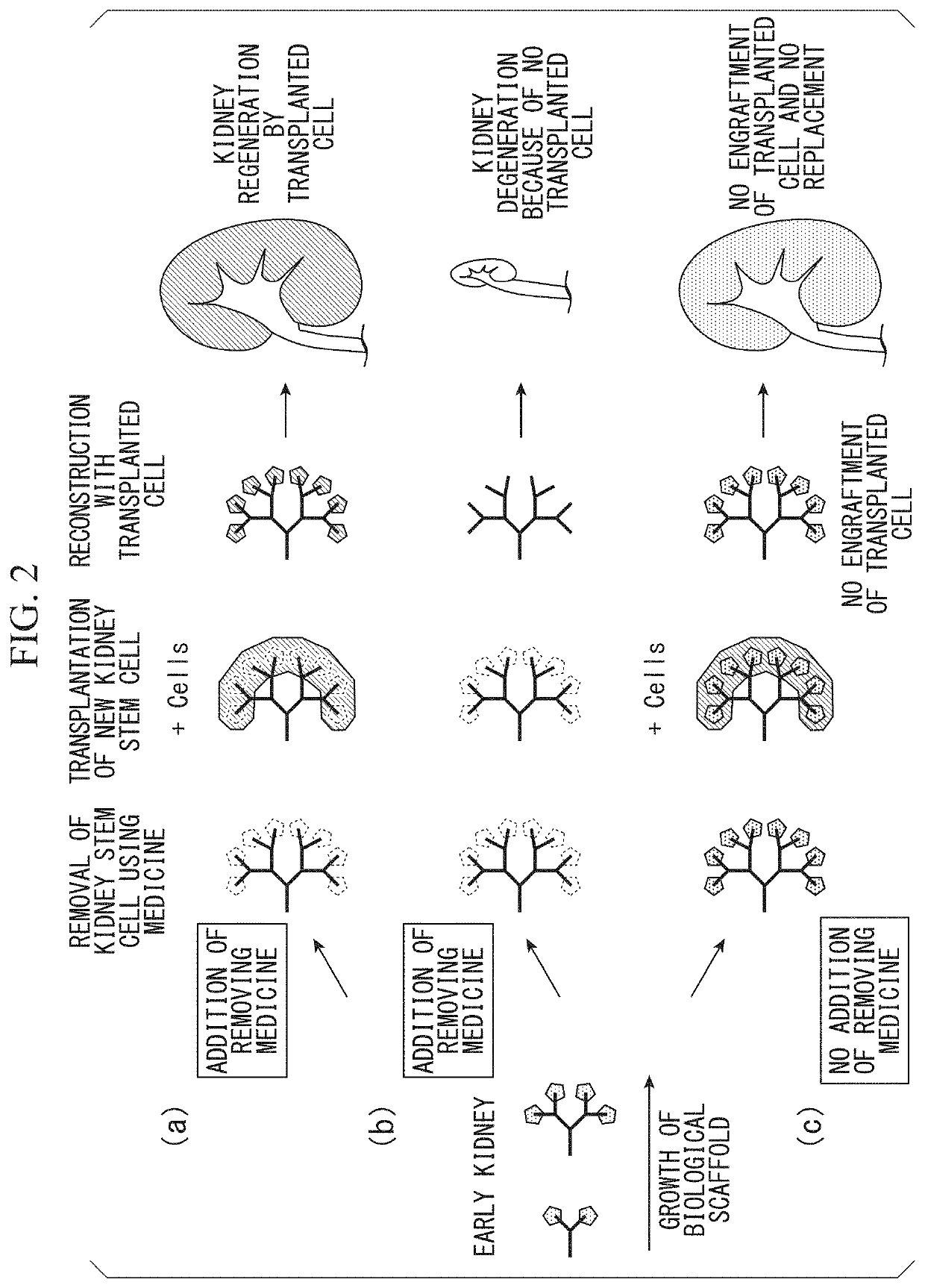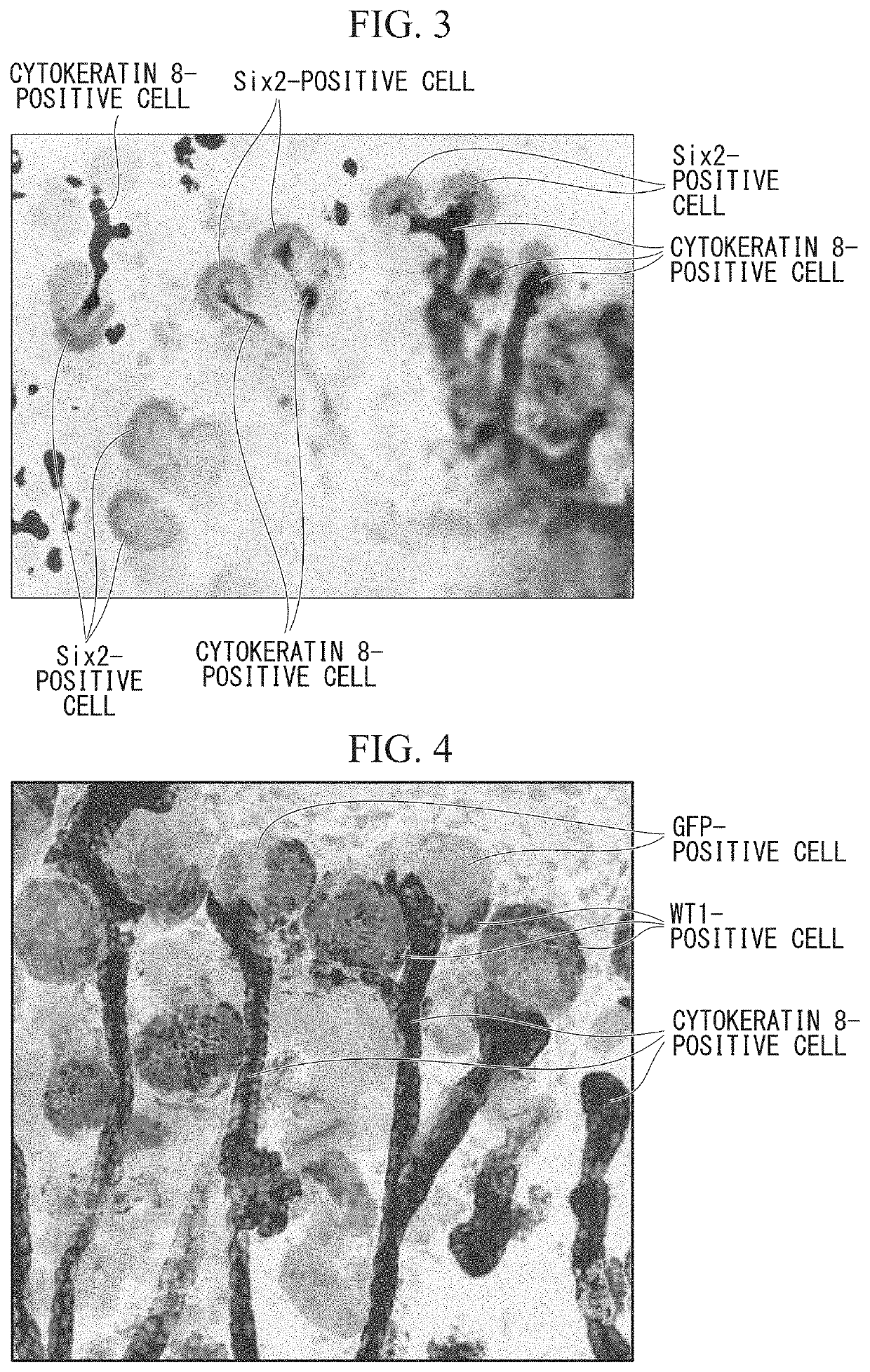Kidney production method
a production method and kidney technology, applied in the field of kidney production method, can solve the problems of increasing mortality rate, difficult to return to society in many cases, and overburden of dialysis patients
- Summary
- Abstract
- Description
- Claims
- Application Information
AI Technical Summary
Benefits of technology
Problems solved by technology
Method used
Image
Examples
experimental example 1
[0148](Tissue-Specific Removal of Metanephric Mesenchyme in Mouse Embryo)
[0149]The iDTR mouse expressing the diphtheria toxin receptor (DTR) in the Cre recombinase activity-dependent manner was crossed with the Six2-Cre mouse in which the Cre recombinase gene was introduced into downstream of a promoter of Six2. Six2 is a transcription factor that is specifically expressed in the metanephric mesenchyme.
[0150]Subsequently, a mouse that expressed the diphtheria toxin receptor specifically in the metanephric mesenchyme was selected from an F1 mouse on embryonic day 13, and the metanephros was extracted. The extracted metanephros was organ-cultured according to a standard method, and diphtheria toxin was added to the medium. As a result, Six2-positive kidney precursor cells of the metanephric mesenchyme, in which the diphtheria toxin receptor was expressed were killed. As a result, the metanephric mesenchyme was tissue-specifically removed.
experimental example 2
[0151](Transplantation of Kidney Precursor Cells)
[0152]The kidney precursor cells derived from a wild-type mouse were prepared from the metanephros by a standard method and dissociated into single cells using a cell dissociation reagent. Subsequently, 1×105 kidney precursor cells were transplanted into metanephros tissue from which the metanephric mesenchyme was tissue-specifically removed, which was prepared in Experimental Example 1. Thereafter, the organ culture of the metanephros tissue was continued.
experimental example 3
[0153](Immunostaining 1 of Kidney Tissue)
[0154]The metanephros tissue of Experimental Example 2 was fixed with 4% paraformaldehyde after being cultured for 5 days from the transplantation of the kidney precursor cells, and therefore a tissue section sample was prepared. Subsequently, Six2 which is a marker of the metanephric mesenchyme and cytokeratin 8 which is a marker of the ureteric bud were immunostained, respectively. FIG. 3 is a fluorescence microscopy photograph showing the result of immunostaining. The magnification is 100 times. In FIG. 3, Six 2-positive cells are derived from the transplanted kidney precursor cells. In addition, cytokeratin 8-positive cells are derived from the host animal (F1 mouse of Experimental Example 1).
[0155]As a result, it was confirmed that, using the ureteric bud derived from the F1 mouse of Experimental Example 1 as a scaffold, the kidney precursor cells transplanted in Experimental Example 2 took over the development program of the host, auton...
PUM
| Property | Measurement | Unit |
|---|---|---|
| mass | aaaaa | aaaaa |
| time | aaaaa | aaaaa |
| three-dimensional structures | aaaaa | aaaaa |
Abstract
Description
Claims
Application Information
 Login to View More
Login to View More - R&D
- Intellectual Property
- Life Sciences
- Materials
- Tech Scout
- Unparalleled Data Quality
- Higher Quality Content
- 60% Fewer Hallucinations
Browse by: Latest US Patents, China's latest patents, Technical Efficacy Thesaurus, Application Domain, Technology Topic, Popular Technical Reports.
© 2025 PatSnap. All rights reserved.Legal|Privacy policy|Modern Slavery Act Transparency Statement|Sitemap|About US| Contact US: help@patsnap.com



